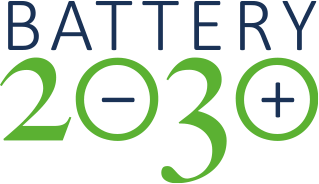Battery production consists of diverse multi-disciplinary steps with numerous influencing factors and interdependencies. Current manufacturing processes still face numerous challenges to meet the demands regarding high standards in quality, low environmental impact, and economic competitiveness. Despite highly specialised production lines in the so-called gigafactories, significant quantities of materials and cells are discarded due to specification mismatches. To address this issue digital twins is seen as a core element to accelerate manufacturing, with the potential to improve planning and operation of current and future battery production systems.
The battery cell is the smallest and most fundamental functional element in the battery value chain that gathers the essential materials, components, and features of a given battery technology. Modules and battery systems basically comprise the engineering solutions to make such cells work in a practical environment. The Battery 2030+ roadmap focuses mainly on the cell level.
The making of a battery
In order for digital models to be robust they must incorporate multi-physics, data-driven models and hybrid modelling, and be able to handle different kinds of battery chemistries as well as new manufacturing processes. Advanced digital models can autonomously control steps of battery production and support process chains. The first applications can already be found in research and partly in industrial practice. However, they are rarely transferable between production stages and between different battery configurations.
The current focus is on establishing connections between the different digital parameters of models and the controllable parameters in the manufacturing process. This linkage is crucial in enabling practical optimization workflows to optimize the manufacturing process and achieve desired outcomes.
The new concepts will lead to new designs that:
- minimise scrap, reduce primary energy use and emissions
- speed up processing by smart prototyping and manufacturing techniques
- improve quality and generate cost reduction strategies
- improve the homogeneity of the manufactured cells.
